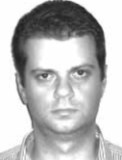HealthManagement, Volume 19 - Issue 4, 2019
Summary: The past, present & future of dementia care using sensors in everyday life objects through four use cases from research labs to large-scale pilots & adoption by pharmaceutical companies.
Alzheimer’s Disease (AD) is a progressive neurodegenerative disorder. It is the main cause of dementia, a syndrome defined by loss of cognitive capacities and independence in daily life. Approximately two thirds of all dementia cases are caused by AD. Patients with AD dementia typically suffer from progressive memory loss.
The societal and economic impact of dementia is enormous. Currently, 50 million people in the world are diagnosed with dementia. As the world’s population ages, this number is expected to triple by 2050. At this moment, the costs associated with dementia are estimated at one trillion US dollars per year. These costs are expected to double by 2030 (The World Alzheimer Report 2018).
Alzheimer’s Disease poses numerous clinical and scientific challenges, as well as several unmet medical needs. First and foremost, there is no cure for AD. Available medication may alleviate the symptoms of AD dementia. However, treatments to slow or stop disease progression have not been developed successfully to date. Second, diagnosing patients in an early disease stage is very difficult. Typically, patients consult a physician for the first time when they experience memory problems. Unfortunately, at that point, the brain has already suffered a lot of neural damage.
You might also like: Encouraging health app use with seniors
Technology can play a central role in earlier identification of disease and healthy ageing. Smartphones, wearables and smart home sensors can measure and extract activity, behaviour and daily living parameters relevant to the disease. At some point these digital biomarkers can be used for both assessment and treatment. In the former case, detection of signs combined with predictive analysis can lead to prevention as early as five years before AD’s onset. In the latter case, monitoring can reveal trends and patterns pointing to personalised and per-case intervention. Non-pharmaceutical interventions and lifestyle change, such as consumption of natural products, physical and cognitive exercise, serious games, relaxation, meditation and other forms of Cognitive Behavioral Treatment (CBT) have proved their effectiveness in slowing down or reversing the progress of mental decline (Livingston et al. 2017). This way, patients can self-manage and feel included in their care but, most importantly, (formal and informal) carers and doctors can monitor progress and re-adapt interventions. Still, technological advancements are diverse, heterogeneous and often not suitable for large-scale adoption and end-user acceptance by such a sensitive demographic.
In this article we present the evolution of sensor-based technology for the care of elders and dementia in time and variety through four use cases, beginning with research lab prototype development, to large-scale pilots and adoption by the pharmaceutical industry.
You might also like:Empowering communities to improve their health and wellbeing
Wearables, Multimedia, Object and Appliance Sensors
The Dem@Care platform for sophisticated multi-sensor monitoring
Dem@Care (demcare.eu) is a platform developed at the early onset of affordable wearable and smart home technology, between 2010 and 2015. The platform managed to interconnect not only heterogeneous devices but also sophisticated algorithms for processing multimedia (Stavropoulos et al. 2017). Wearable device prototypes by Philips, speech analysis for dementia biomarkers by IBM, image analysis from 3D depth cameras to understand activities, wearable GoPro cameras to recognise objects, sensors on everyday objects and electrical appliances were all integrated in the same software platform.
Dem@Care was piloted in lab trials in Thessaloniki, Greece and Nice, France in technology-facilitated and accelerated trials for cognitive state assessment with three hundred participants and an accuracy of 80%. The system was then deployed in nursing homes in Sweden and homes in Ireland and in Greece. Six home users in Thessaloniki, Greece successfully piloted the system for an extended period of time (between six months and a year), demonstrating its ability to co-exist with a patient at home, support and improve personalised interventions and, in turn, stabilise or even improve their cognitive state (when compared to control groups of interventions not supported by the system) (Lazarou et al. 2016). However, the sophisticated design of the platform, the installation and maintenance cost of the equipment prevented its large-scale deployment and adoption.
Smart Home Monitoring in Large Scale
The ACTIVAGE IoT platform for large-scale pilots
ACTIVAGE (activageproject.eu) in 2017 came to expedite findings of research technology similar to Dem@Care to be piloted in the large-scale for validation and greater impact. However, several IoT integration platforms have already emerged, presenting technological barriers and market fragmentation. Therefore, the primary goal of the new platform is still to unite and integrate open IoT platforms, including FIWARE (fiware.org), universal (universaal.info) and OpenIoT (openiot.eu). Through the united platform and focusing on Active and Healthy Ageing (AHA) applications, an ecosystem of App and IoT developers, healthcare providers and business stakeholders will emerge. Open calls invite third parties to develop and to cross-deploy ACTIVAGE solutions in Europe, with the ACTIVAGE Marketplace (marketplace.activage.iti.gr) being the central hub for ecosystem growth.
Deployments in ACTIVAGE span across nine sites in seven countries: Spain, France, Italy, Germany, Greece, Finland and United Kingdom. A mixture of several scenarios is demonstrated in each site, not limited to dementia care but also AHA: activity and behavioural monitoring, mobility and transport, emergency situations and more. Reaching thousands of people, ACTIVAGE deployments include an unrestricted range of devices due to the unified platform.
In Greece, smart home sensors provide presence in a room, environmental temperature, humidity, luminance and door usage (for going out) to extract patterns of behaviour at home. An additional emergency button provides elders with the means to call their relatives, doctors or even the authorities for help. Still, a drawback of the platform is the requirement of experts for installation and maintenance, as it is still under development.
Easy-to-Deploy Smartphone and Wearable Monitoring
The Support2LIVE smartphone app for telecom providers
Support2LIVE (ypostirizo-project.gr) is a monitoring app to support dementia care for elders using a smartphone and a wearable wristwatch combination. With its minimum equipment requirements, the app remains affordable, easy to install and maintain for virtually every elder. Beginning development in 2018, Support2LIVE leverages the penetration of smartphones, with a rising percentage of owners around 30% (66% in Greece), but also wearable fitness trackers, which now come in tens of brands and models. With this momentum, Support2LIVE aims to surpass limitations of more complex IoT platforms (such as ACTIVAGE and Dem@Care) and be disseminated through telecom providers to every home in Greece.
Reduced to a smartphone and an (off-the-shelf) wearable, the platform is still able to measure movement, heart rate, sleep duration, stages, and interruptions and interpret them to stress, physical activity level, sleep quality highly relevant to AD symptoms and quality of life. Meanwhile, the smartphone app can interact with the user delivering brain games and interactive questions both as an assessment and as an improvement tool for effective interventions.
While behavioural monitoring is covered, activity monitoring is excluded, due to the absence of smart home monitoring. This highlights the need for further developments in technology and the market to deploy object-monitoring sensors just as easily as wearables to enable fast-track adoption and greater societal impact.
Wearables, Apps and Everyday Objects in Clinical Settings
The RADAR-AD digital biomarker trials for pharmaceutical research
The technological development of AHA and AD care through technology has meanwhile and quite naturally caught the attention of the pharmaceutical industry. Besides accelerated trials (as in Dem@Care), the metrics and features extracted by monitoring equipment and analysis can be further exploited as an emerging kind of “digital biomarkers” in a clinical setting.
RADAR-AD (radar-ad.org) started in 2018, co-funded by and co-developed with major pharmaceutical companies as an attempt to capture these biomarkers and put them to use for early detection and medicine development. RADAR-AD works closely not only with the industry but also with patient and carer representatives in Alzheimer Europe to try and identify the best equipment for them.
It will deploy technology-aided trials in three different settings in homes: lightly equipped (as in Support2LIVE), moderately equipped (as in ACTIVAGE) and heavily equipped experimental prototypes (as in Dem@Care). The heavier the equipment deployed, the fewer the participants. This showcases how different levels of monitoring are needed according to case, needs and aspirations for scale. Smartphone apps ALTOIDA (altoida.com) and Mezurio (joingamechanger.org/information) are central to patient interaction. They already count millions of users outside the project and proven to be reliable biomarkers for the disease. Still, they will be accompanied by smart home sensors, such as presence in a room, proximity to items and indoor location, appliance and object usage, to capture and understand activities performed, ie functional domains interesting for clinicians. Besides the different levels of installation and monitoring capabilities, the project’s breakthrough is adoption by pharma, which shines hope for a future of more effective treatment.
Conclusion
We are only just starting to understand the possibilities of mobile technology in health care. Evolution in the past decade has shown different levels of equipment are needed according to each use case and aspirations for scale. Heavier installations can work in a clinical setting where patients visit for an assessment. However, lighter more affordable and self-deployable solutions are needed to reach greater societal impact. Currently, such solutions are limited to smartphones and wearable wristwatches, which, in turn, limit monitoring to behavioural qualities such as physical activity level, stress and sleep quality. Monitoring of everyday objects is required to monitor daily activities such as chores, cooking, adherence to medicine and thus actual quantification of one’s functional capabilities. Besides and even before pilots, inclusion and co-design with user representatives are needed. Working with patients, caregivers and regulators can ensure that users are comfortable and safe using the developed technology and adequate regulatory frameworks are developed. Overall, from research labs to large-scale and recently to adoption by and co-development with the pharmaceutical industry, technology promises a brighter future of more affordable, accessible and more effective care of dementia.
Key Points
- Technology plays a central role in earlier identification of disease & healthy ageing
- The integration of multimedia, wearable and smart home sensor analytics can accelerate dementia assessment trials and support clinical interventions at home
- Large-scale pilots for a plethora of use case scenarios for behavioural and activity monitoring, mobility and transport, and emergency are possible through IoT platforms
- Smartphone and wearable combinations are highly deployable solutions to reach high societal impact
- The pharmaceutical industry is starting to adopt and co-develop digital biomarkers using smartphone, wearable and smart home monitoring solutions
- Daily object sensors are needed to monitor functional capabilities and, thus, further advances in technology to reach effective deployment
Acknowledgements
This research has been co-financed by the European Union and Greek national funds through the Operational Program Competitiveness, Entrepreneurship and Innovation, under the call RESEARCH-CREATE-INNOVATE (project code: T1EDK-02668). It has also received funding from H2020-IOT-732679 ACTIVAGE and RADAR-AD - IMI2 (Grant Agreement No. 806999).
References:
ACTivating InnoVative IoT smart living environments for AGEing well, project funded by the EU. Available from activageproject.eu
ACTIVAGE Marketplace built and maintained by CERTH ITI. Available from marketplace.activage.iti.gr
Altoida Medical Device (AMD). Available from altoida.com Dem@Care – Dementia Ambient Care, project funded by the EU. Available from demcare.eu
FIWARE: The open source platform for our smart digital future. Available from fiware.org
GameChanger nationwide project, supported by the University of Oxford Big Data Institute and the UK Alzheimer’s Society. Available from joingamechanger.org
Lazarou I, Karakostas A, Stavropoulos TG, Tsompanidis T, Meditskos G, Kompatsiaris I, Tsolaki M (2016) A Novel and Intelligent Home Monitoring System for Care Support of Elders with Cognitive Impairment. Journal of Alzheimer’s Disease 54: (4). Available from doi.org/10.3233/JAD-160348
Livingston G, Sommerlad A, Orgeta V, Costafreda SG, Huntley J, Ames D, Mukadam N (2017) The Lancet International Commission on Dementia Prevention and Care. The Lancet, 390(10113): 2673–734. Available from thelancet.com/journals/lancet/article/PIIS0140-6736(17)31363-6/fulltext?elsca1=etoc&code=lancet-site
OpenIoT is a reference semantic-based platform in the current IoT-EPI (European Platform Initiative). Available from openiot.eu
RADAR-AD Collaborative research that explores the potential of mobile and digital technologies to improve the assessment of Alzheimer’s Disease. Available from radar-ad.org
Stavropoulos TG, Meditskos G, Kompatsiaris I (2017) DemaWare2: Integrating sensors, multimedia and semantic analysis for the ambient care of dementia. Pervasive and Mobile Computing, 34. Available from doi.org/10.1016/j.pmcj.2016.06.006
Support2LIVE EU funded project. Available from ypostirizo-project.gr
The World Alzheimer Report 2018. The state of the art of dementia research: New frontiers.
universAAL IoT open source platform. Available from universaal.info





